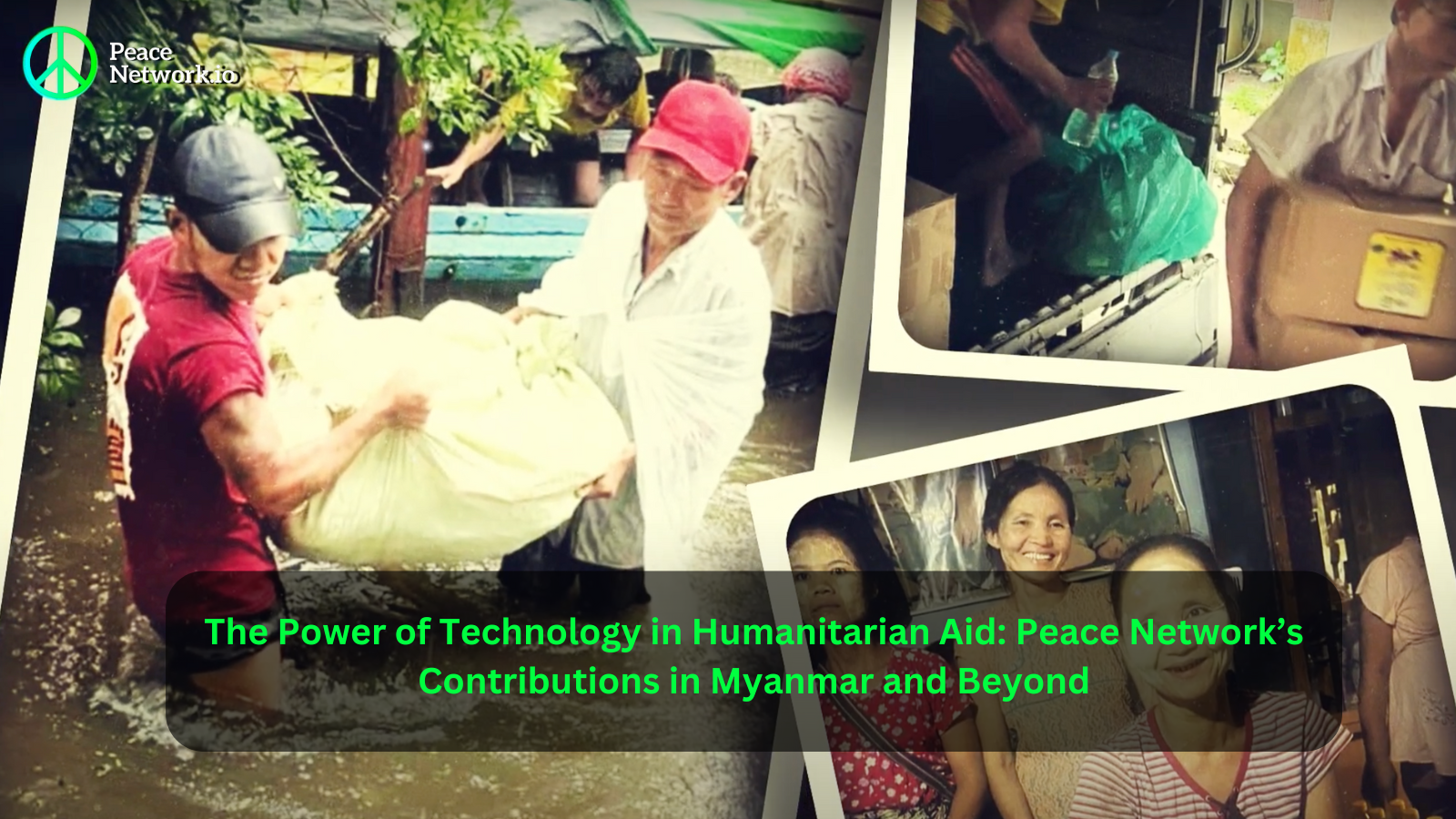The Power of Technology in Humanitarian Aid: Peace Network’s Contributions in Myanmar and Beyond

On April 9, 2025, UN Special Envoy Julie Bishop visited Myanmar to witness firsthand the devastating aftermath of the 7.7-magnitude earthquake that struck on March 28. The earthquake left a trail of destruction across six regions and states, taking more than 3,600 lives, injuring over 5,000 people, and leaving at least 145 missing. Already crippled by civil conflict since the military coup in February 2021, Myanmar’s latest tragedy has deepened its humanitarian crisis to unprecedented levels.
Homes, schools, Buddhist monasteries, and vital infrastructure were flattened. Millions already internally displaced by conflict now face even greater hardship, with access to clean water, power, communication, and transport completely cut off in some areas. The earthquake has turned a dire situation into a full-blown humanitarian emergency, compounding the difficulties faced by vulnerable communities and overburdened aid systems.
Myanmar’s Humanitarian Crisis: The Need for New Solutions
Humanitarian efforts in Myanmar have long been hindered by security challenges, governmental restrictions, and complex conflict dynamics. Traditional NGOs often face delayed access, blocked aid corridors, or operational risks that limit their capacity to act swiftly. In light of these difficulties, innovative organizations like Peace Network are stepping in to bridge the gap—using cutting-edge technology to enable rapid, transparent, and borderless aid.
Peace Network is not a typical NGO. It is a blockchain-powered global charity movement driven by the belief that technology should serve human happiness. With a presence in 50 countries and territories, over 2 million members and volunteers, and a track record of supporting 65 villages, 1,000 households, and more than 12,000 people, Peace Network is changing how humanitarian aid is delivered.
Peace Network’s Trip to Myanmar
Amid the chaos, Peace Network volunteers reached the Myanmar border—an area where even the largest aid agencies hesitate to operate. Their efforts focused on delivering emergency aid to 150 families, despite enormous logistical and security challenges.
- Flexible field operations enabled them to work around restricted access zones.
- A lean management model allowed for rapid deployment of resources.
- Blockchain transparency ensured that every donation was tracked and utilized effectively
This trip was not only a critical moment in delivering life-saving aid but also a powerful statement: that peace, compassion, and technology can reach where politics and conflict so often fail.
Blockchain in Action: A New Era for Humanitarian Aid
Peace Network’s model centers on using blockchain and cryptocurrency to power transparent, accountable, and decentralized aid systems. By bypassing traditional financial barriers and bureaucratic delays, the organization can:
- Collect funds globally through crypto crowdfunding.
- Allocate resources in real-time to verified missions.
- Provide donors with verifiable proof of impact through on-chain data.
This innovative approach empowers individuals across the world to participate in global charity while ensuring that donations are used ethically and effectively.
In Myanmar, this meant delivering critical resources like food, water, medicine, and hygiene supplies directly to affected communities—without waiting for official green lights or complex paperwork. In volatile environments like conflict zones, speed, trust, and agility can save lives.
International Context: The UN’s Response
The UN, under the leadership of Special Envoy Julie Bishop, continues to advocate for humanitarian corridors and ceasefires in Myanmar. Although the military government announced a temporary ceasefire to allow aid distribution, reports from the ground suggest fighting continues in many areas, complicating relief efforts.
In this context, Peace Network’s grassroots and tech-forward model offers a powerful complement to international diplomacy. While the UN works through official channels, decentralized organizations like Peace Network mobilize quickly and directly, reaching people who might otherwise be left behind.
Peace Network’s Mission: More Than Aid, A Movement
Peace Network is driven by more than the desire to offer aid—it seeks to redefine what global charity looks like. From its inception, the organization has aimed to:
- Use blockchain technology to ensure 100% transparency.
- Break the mold of traditional NGOs with more agile, community-based models.
- Inspire a global culture of compassion and connectedness.
What started as a humanitarian project funded by cryptocurrency has grown into a worldwide movement. Whether responding to earthquakes in Myanmar or supporting rural villages in Africa, Peace Network demonstrates that technology and love are not incompatible—they are partners in building a better world.
The Future of Global Charity
As natural disasters and political conflicts become more frequent and intense, the need for scalable, transparent, and rapid-response humanitarian solutions has never been greater. Peace Network represents this future. It is an example of how innovation, decentralization, and community spirit can converge to meet humanity’s most urgent needs.
By empowering volunteers on the ground and contributors around the world, Peace Network makes global giving more inclusive and impactful. Its success in Myanmar shows that even in the most hostile conditions, a decentralized aid model can deliver real results.
Final Thoughts
In a world facing growing inequality, displacement, and climate-driven disasters, we need new models of humanitarian aid—models rooted in transparency, innovation, and compassion. Peace Network offers a beacon of what’s possible when we combine the power of technology with the timeless value of human kindness.
As they continue to grow and reach more communities across continents, one thing remains unchanged: Peace and love are our mission.

